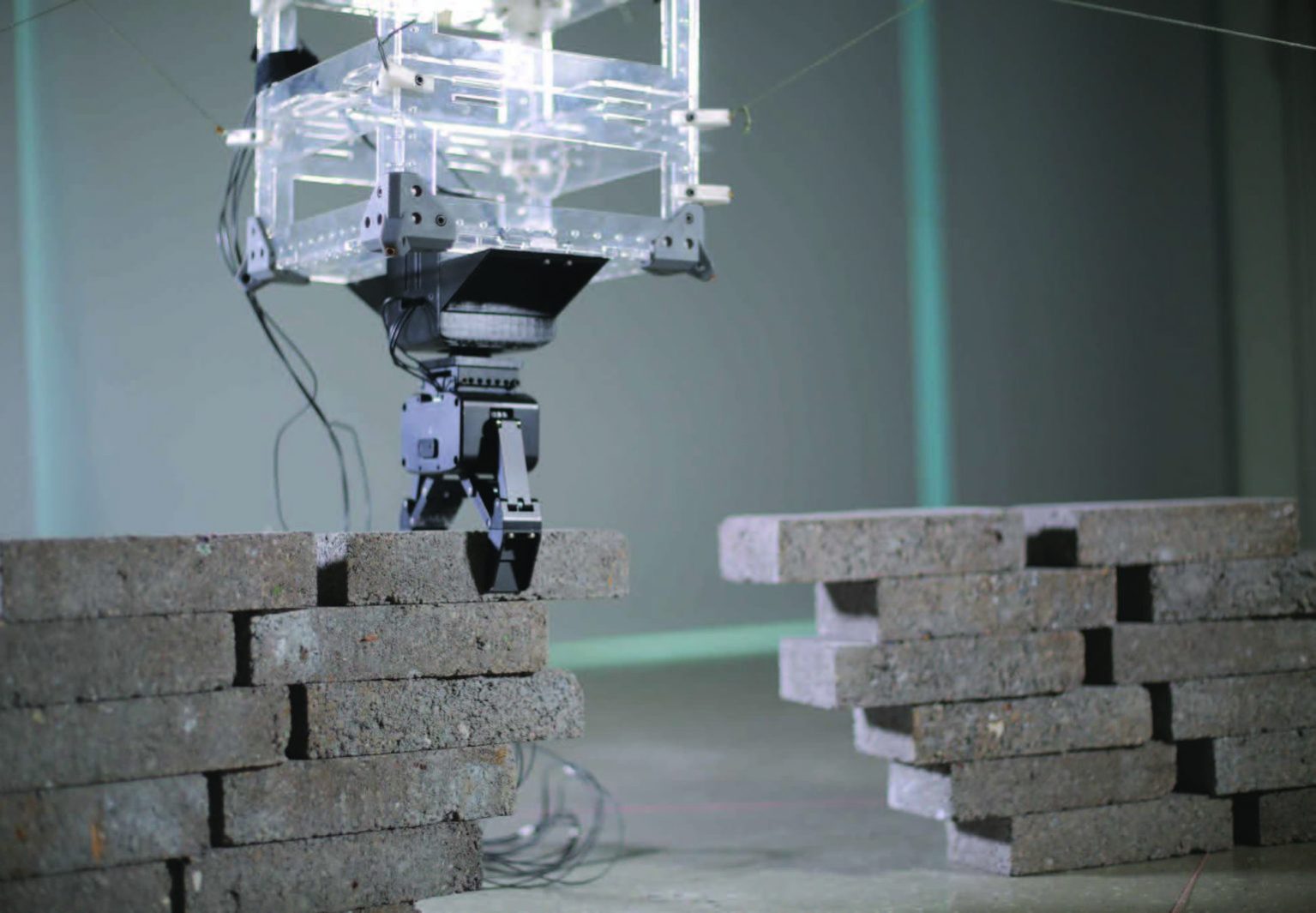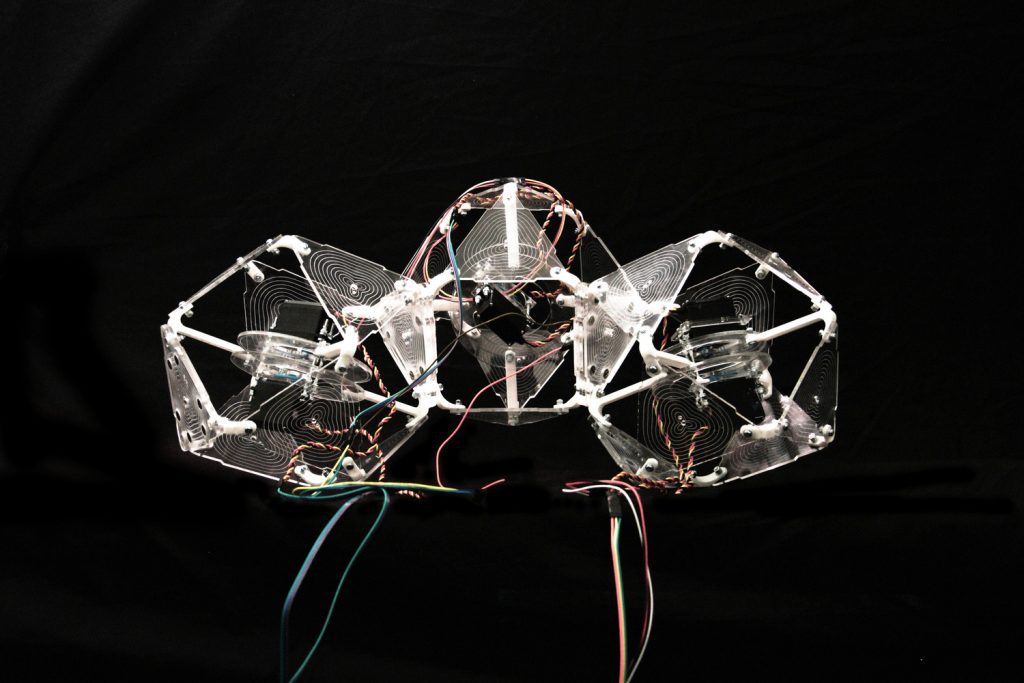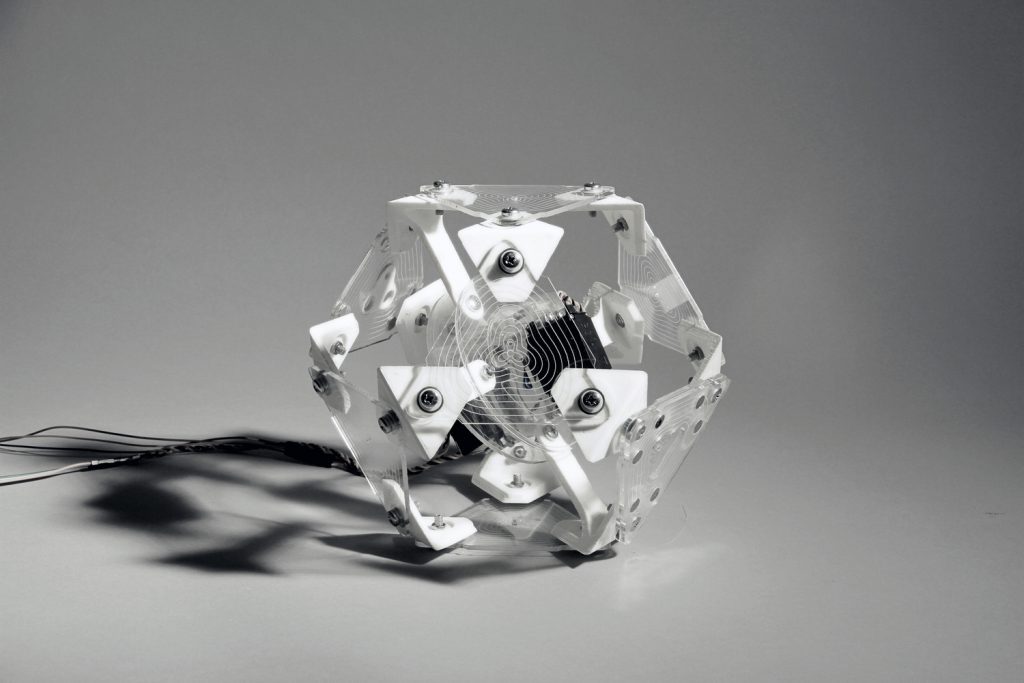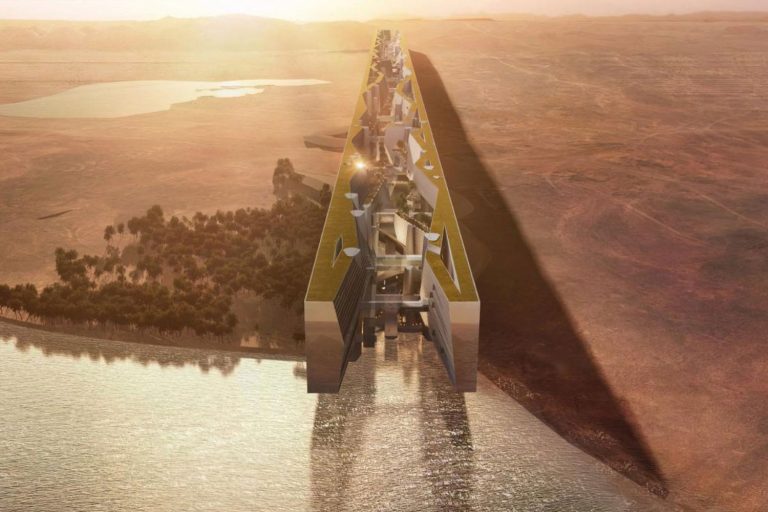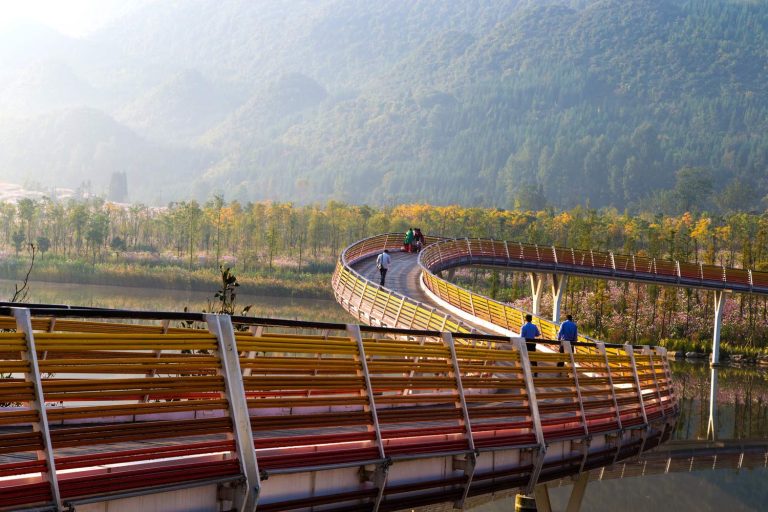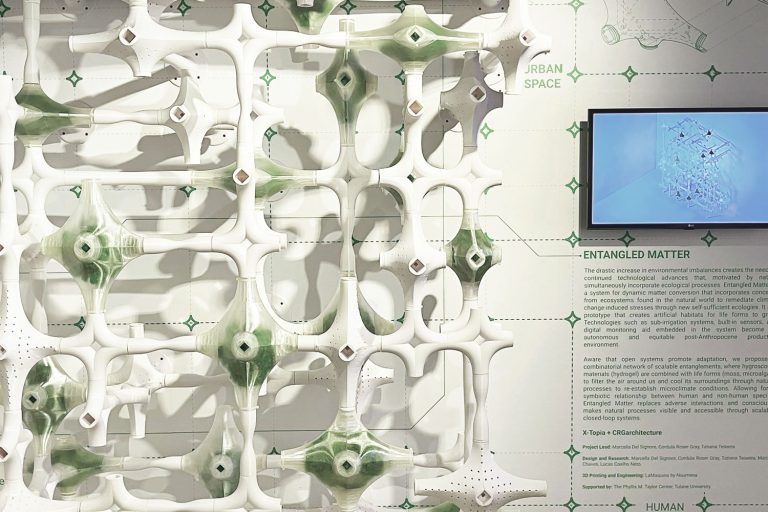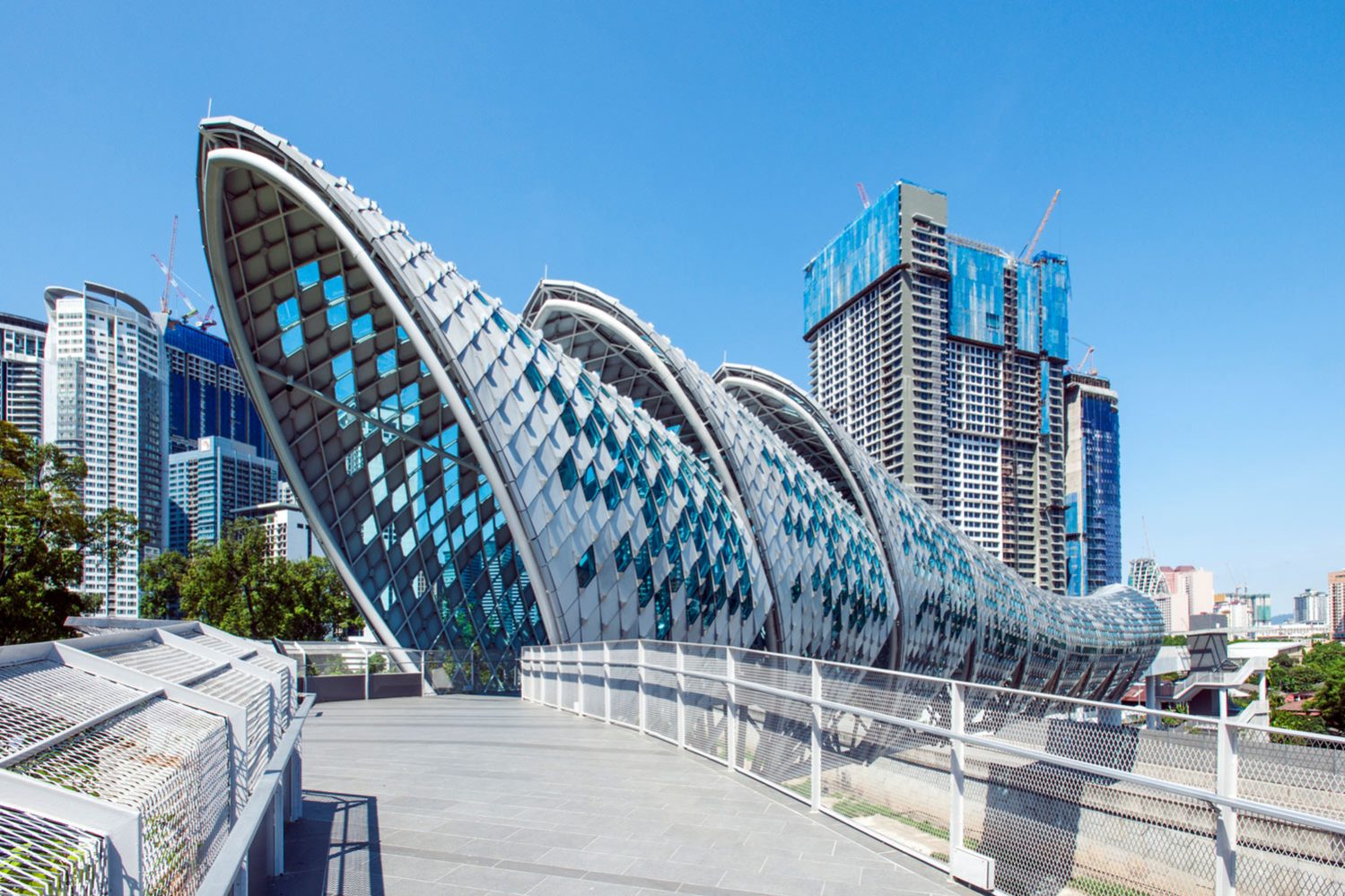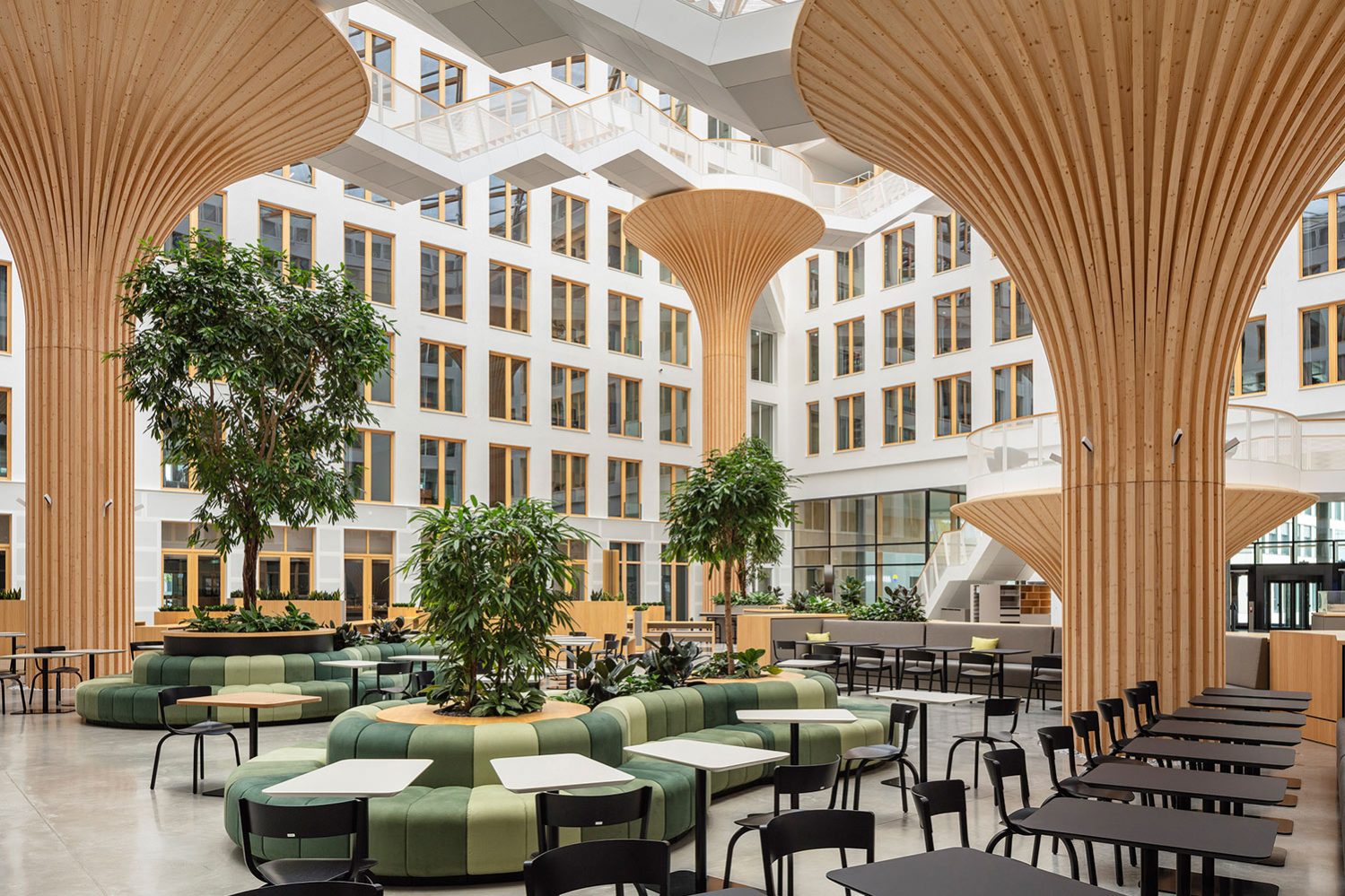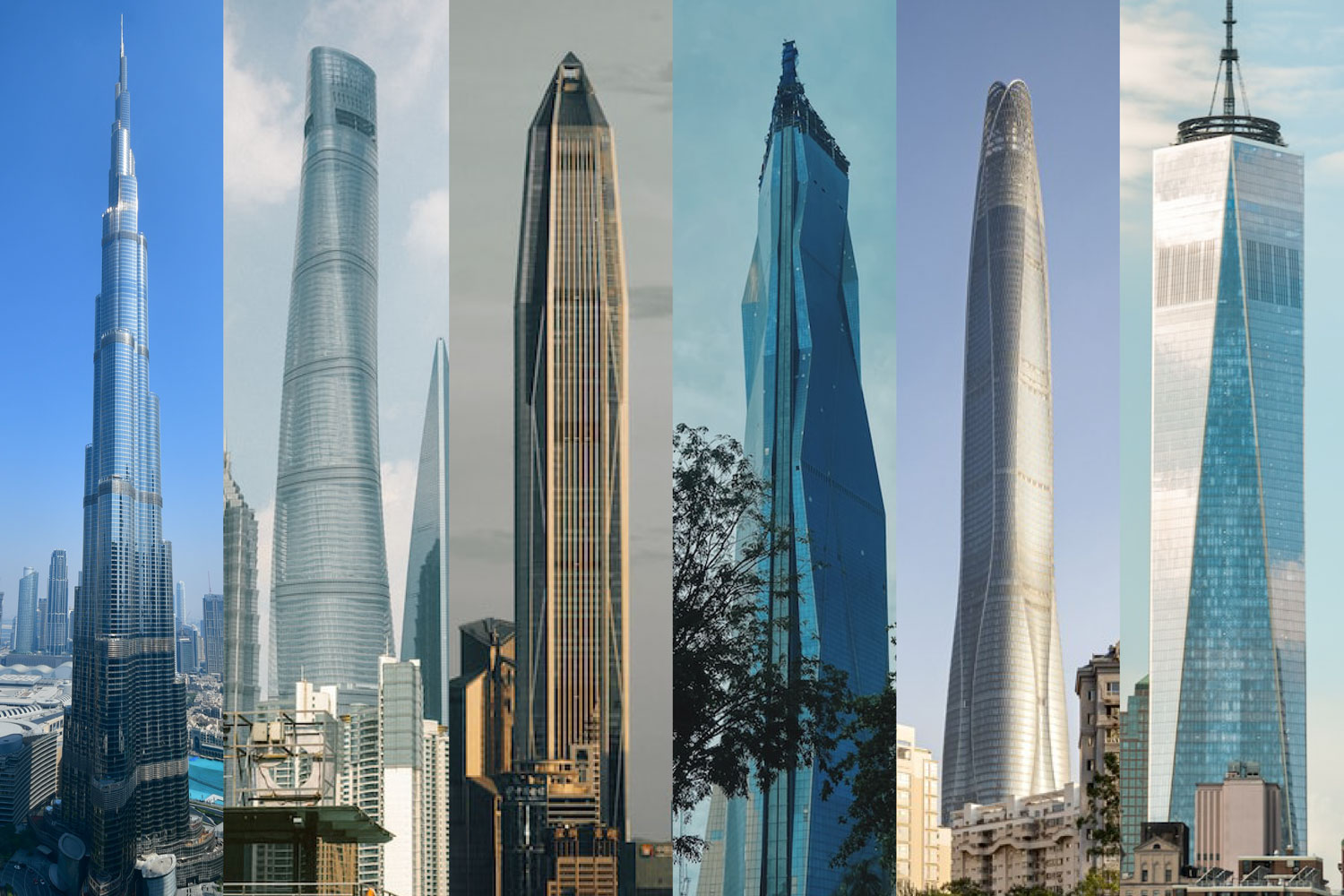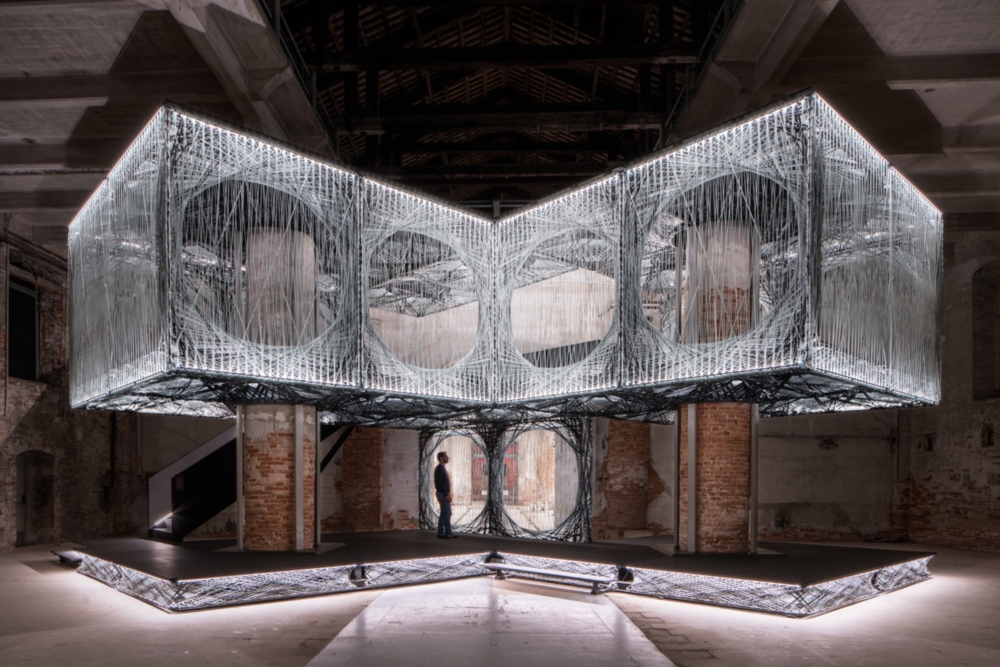
Robots In Construction
Since the turn of the 20th century, the role of robots in construction and architecture has grown significantly, and they are pushing the limit in architecture. The cutting-edge field of robotics has attracted many professions’ attention. Today, robots are widely utilized in industry, the military, domestic purposes, architectural design, and construction processes. While being intensively investigated by architects and designers, the advancement of robotic systems has significantly altered the available design techniques and started to push the limits of architecture. Architects with little to no scripting experience may program industrial robots using specialized plug-ins for Grasshopper3D, such as KUKA|prc or HAL. Robot codes and digital parametric setups may both be altered within seconds. Processes are advancing quickly, making it possible to modify and individualize architectural design and its materialization with minimal time and effort. This advancement in digital fabrication fundamentally alters how architects interact with technological devices and offers a fresh insight into the interplay between the digital and physical worlds.
Robotic arms are considered the most common robot type when talking about construction robots. However, the term “robotics” is quite broad and refers to any machine or technological system that automates a set of actions normally done manually by humans. Robots are autonomous systems that can be programmed to perform certain behaviors and respond to commands using sensors and computer programming. They can automatically perform a complicated series of tasks and adapt and learn from the tasks they are taught to execute. These robots are adaptable in terms of scale, size, and type. Namely, stationary, mobile, and swarm robots are the main types that help execute numerous architectural tasks. Each of these categories may contain some sub-categories as well.
Read about Top 5 Robot Manufactured Projects in Architecture and Design.
If you are interested to learn more about robotic fabrications with hot wire cutting techniques, you can check the Designing for Robotic Fabrication workshop by PAACADEMY taught by the ZHA Code Team.
1. Stationary Robots
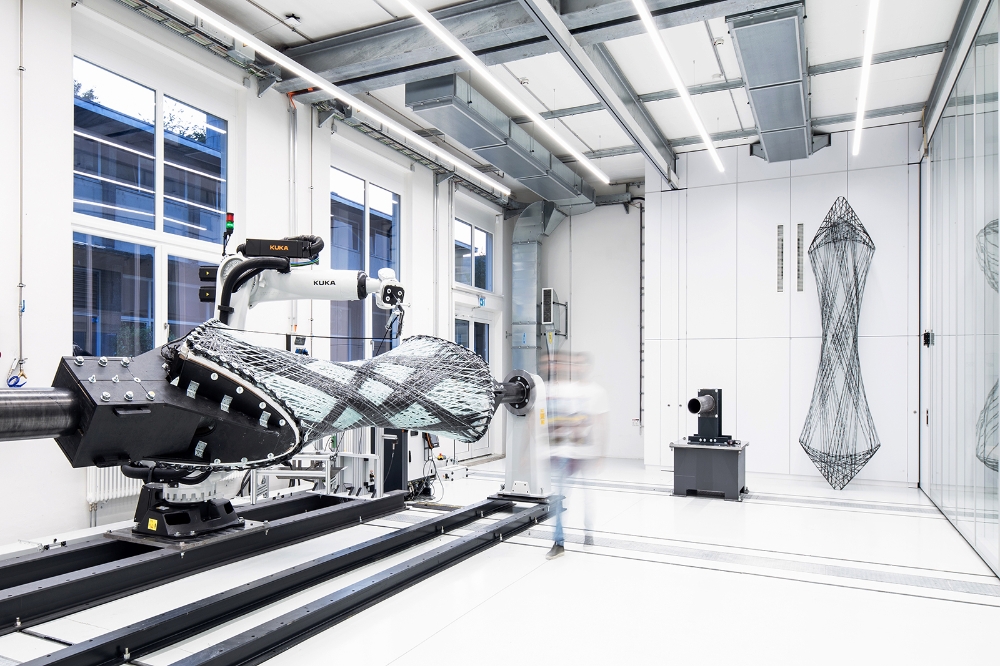
Stationary robots are robots that operate without changing positions. The term “stationary” does not imply that the robot is not moving. It means that the base of the robot does not move throughout the operation. Robots anchored to the floor, ceiling, or another surface are considered stationary. Although it is extremely simple to automate these robots, they can only construct structures that fit in their workspace. These robots usually modify their surroundings by manipulating the position and orientation of an end-effector.
Stationary robots in construction mainly include gantry robots, robotic arms, and cable robots.
1. A. Gantry Robots
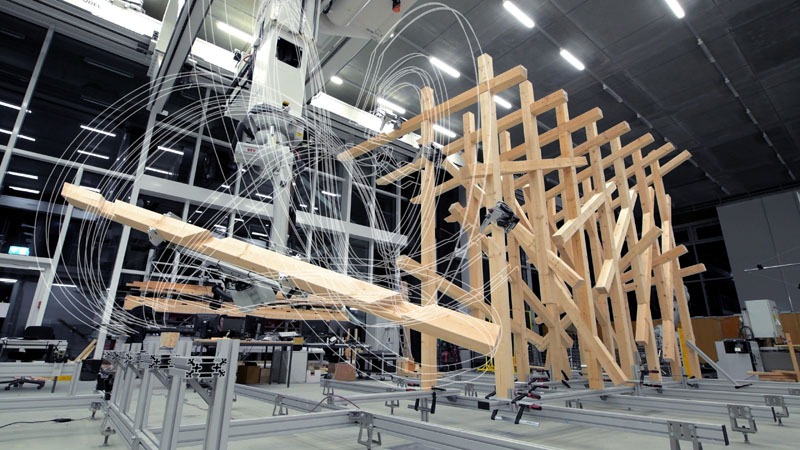
A gantry robot is an overhead system with an attached manipulator that enables movement across a horizontal plane. Gantry robots are also referred to as Cartesian or Linear robots. They are typically huge systems for pick and place operations, welding, and many other applications. These robots in the construction provide large work areas and better positioning accuracy. The robot’s ability to place a part correctly is known as position accuracy. Because they use an X, Y, and Z coordinate system, gantry robots are simpler to program in terms of the motion. They are less constrained by limitations in floor space, which is an additional benefit.

Gramazio Kohler’s research group addresses the automatic timber joint assembly of a spatially connected structure as an awesome instance of using gantry robots in construction. The project benefits from custom computer modeling, visualization, and feasibility-checking software for creating structures with lap joints. The 3.4-meter-tall structure consists of 40 pieces of 100x100mm profile timber elements.
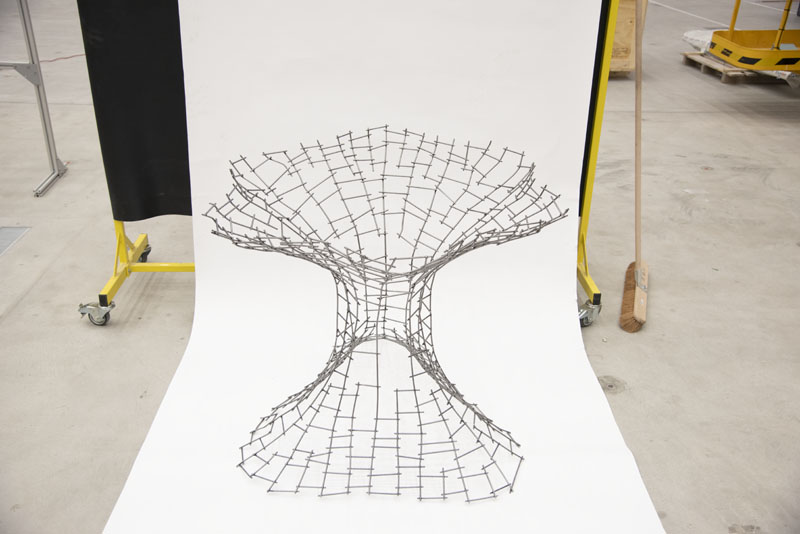
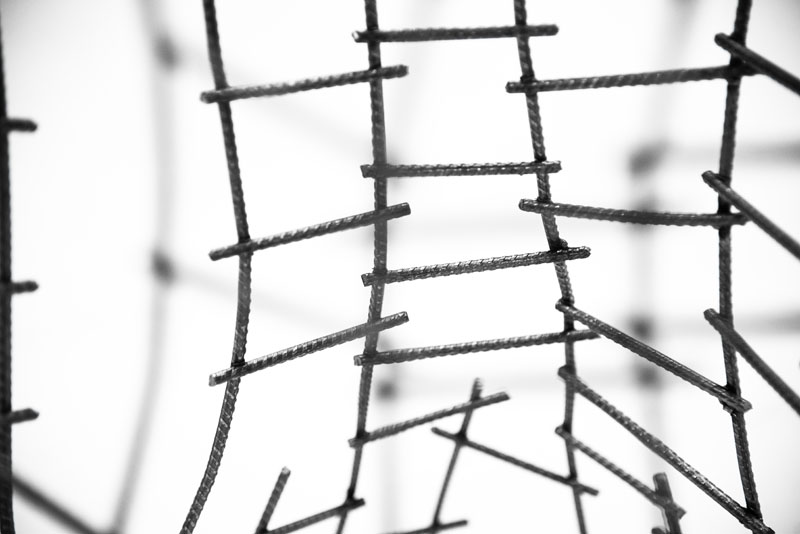
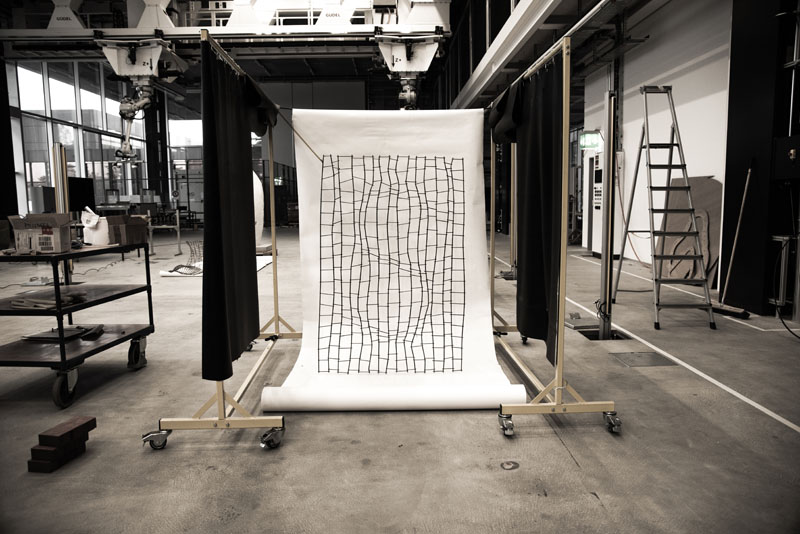
As another example, FrameForm is a mesh mold extension that provides a computational approach for designing structurally sound metal frames. It uses a gantry robot to integrate automated bar bending, welding, and cutting. It aligns frames with structurally advantageous orientations and decomposes models into fabricable pieces, making the fabrication process scale-invariant and globally aligning frames aesthetically beautiful and structurally informed.
This is a Ph.D. research project of ETH Zurich that investigates the manufacturing boundaries of the Mesh Mold hardware and serves as inspiration for future generations.
1. B. Robotic Arms (Articulated Robots)
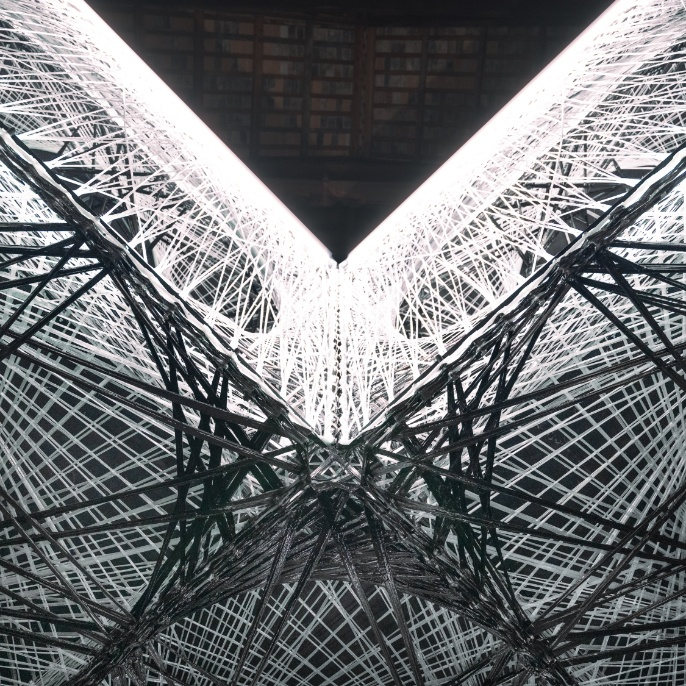
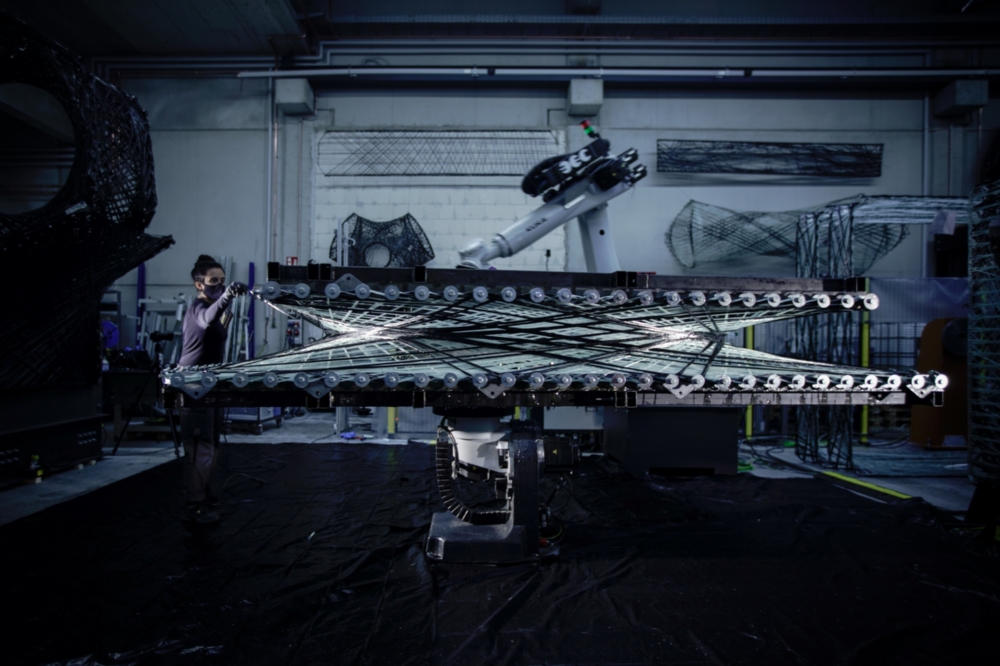

Robotic arms (also known as articulated arm robots) are the foundation of manufacturing, machinery, and industrial automation robotics. They have evolved from their deep origins in the automobile production sector into a comprehensive and flexible tool for numerous industries. Indeed, they are the most prevalent types of robots in construction. They can perform several tasks like welding, material handling, thermal spraying, painting, drilling, and many others. These robots have joint structures with articulation points. Each extra joint, known as an axis, adds to the robot arm’s range of motion; the more axes there are, the more accurate the robot arm may be.
A significant example of using a robotic arm in architecture is the full-scale, multi-story architectural installation of Maison Fiber by ICD and ITKE. The structure consists of reconfigurable fibrous floor slabs and walls using the 2.5-meter grid size. The fibrous wall and ceiling elements were created utilizing a coreless, robotic winding method, which allows for regionally load-adapted design and fiber alignment, resulting in an exceptionally lightweight structure. This project is a spatial expression of a highly dematerialized structure with reconfigurable construction parts.
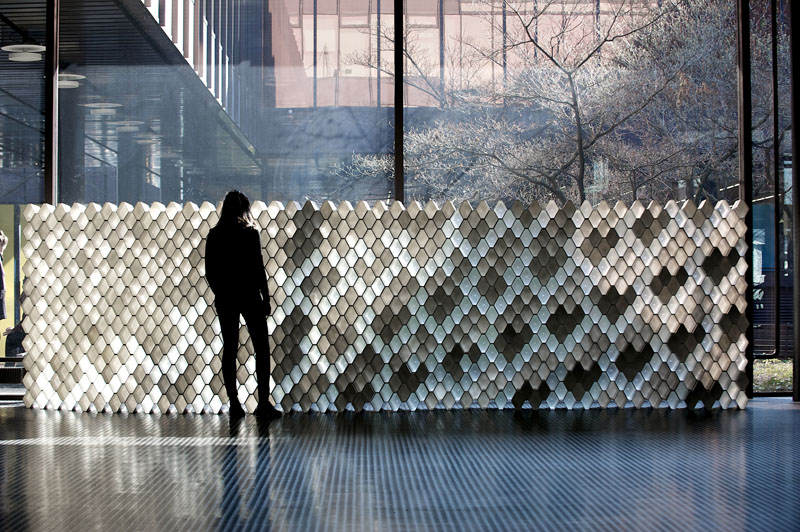
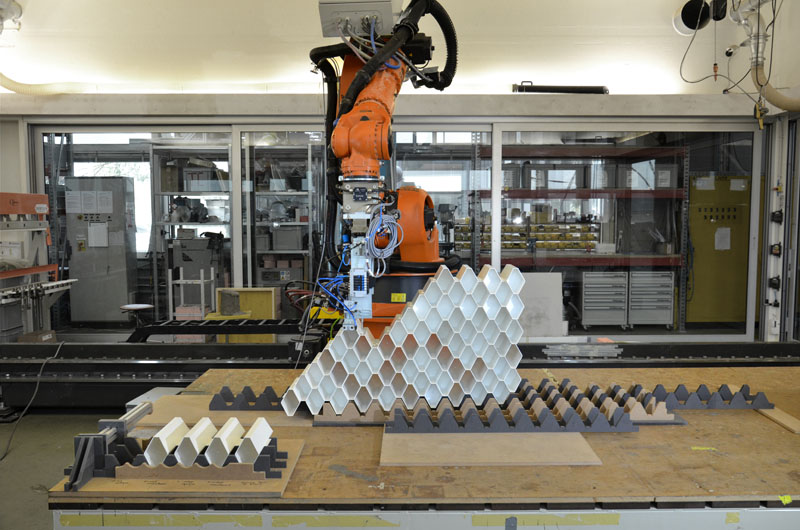
The second instance of using robotic arms in architecture is the “Robotics Brick” project, in which an acoustic wall system for office spaces was fabricated. The research had two objectives: first, the essential incorporation of strong but previously unknown acoustical phenomena, sound dispersion, into the construction of the walls; Second, the creation of a computational design and manufacturing framework capable of producing individually adjustable walls in an industrial setting.
1. C. Cable Robots
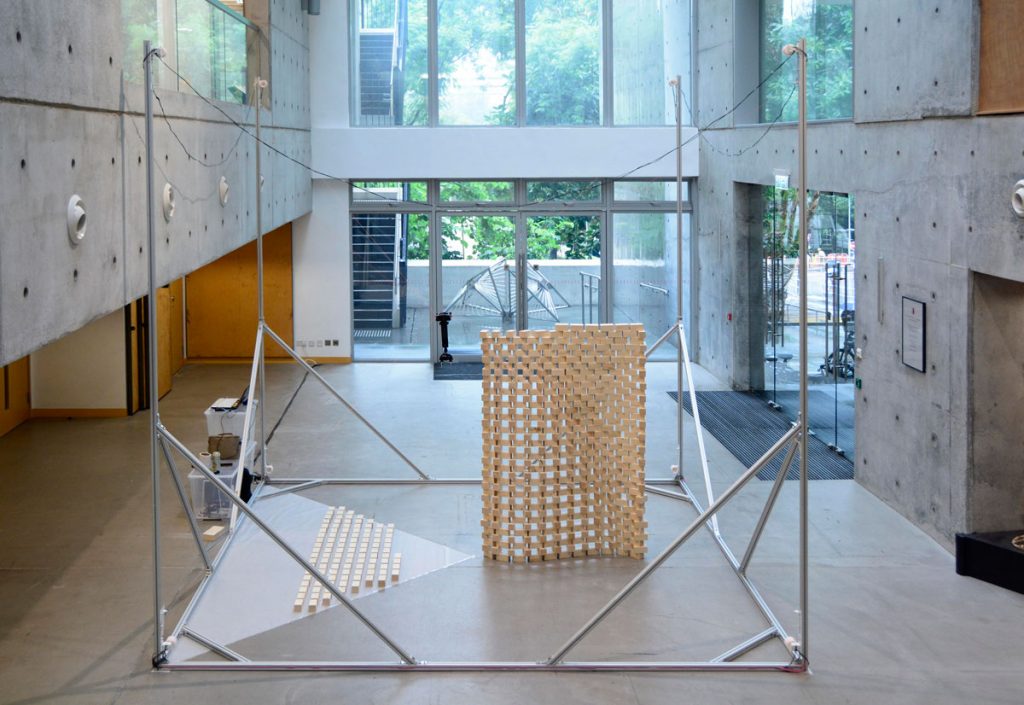
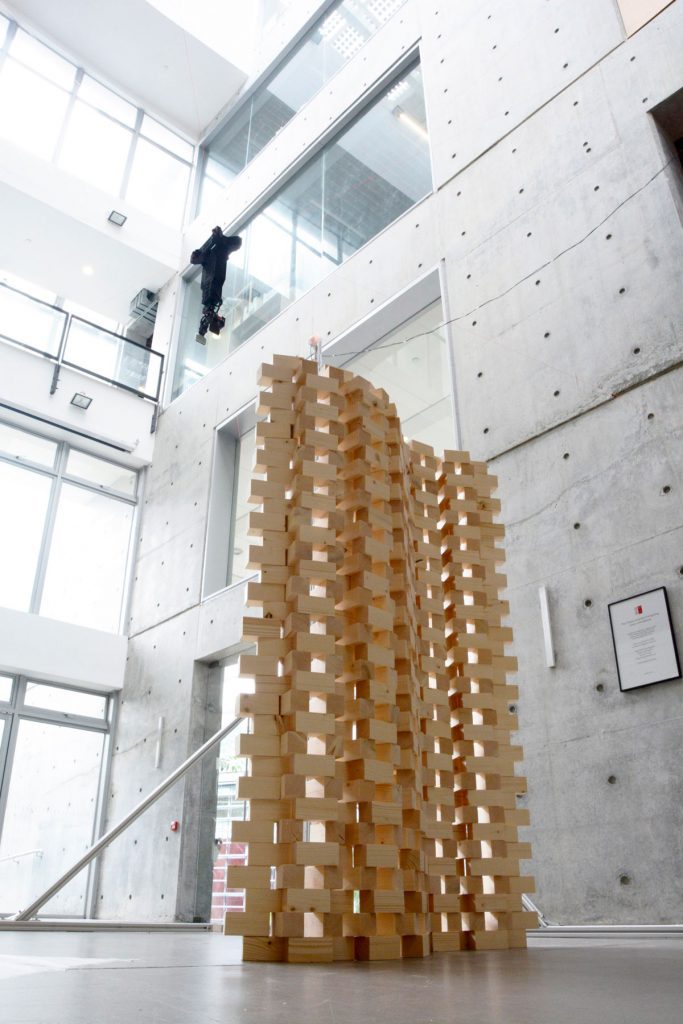
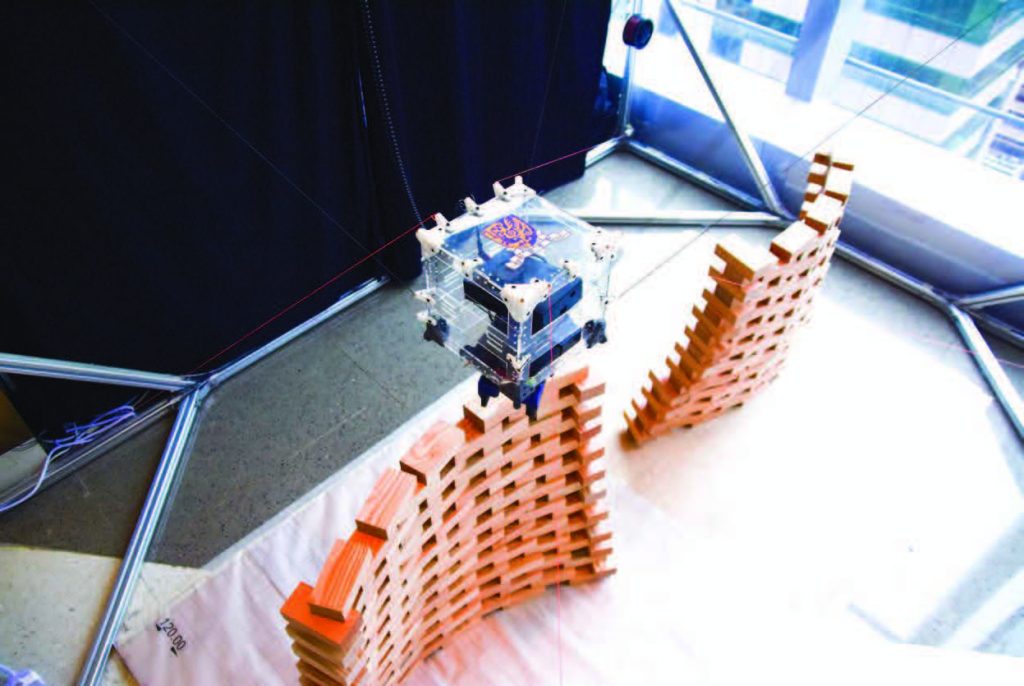
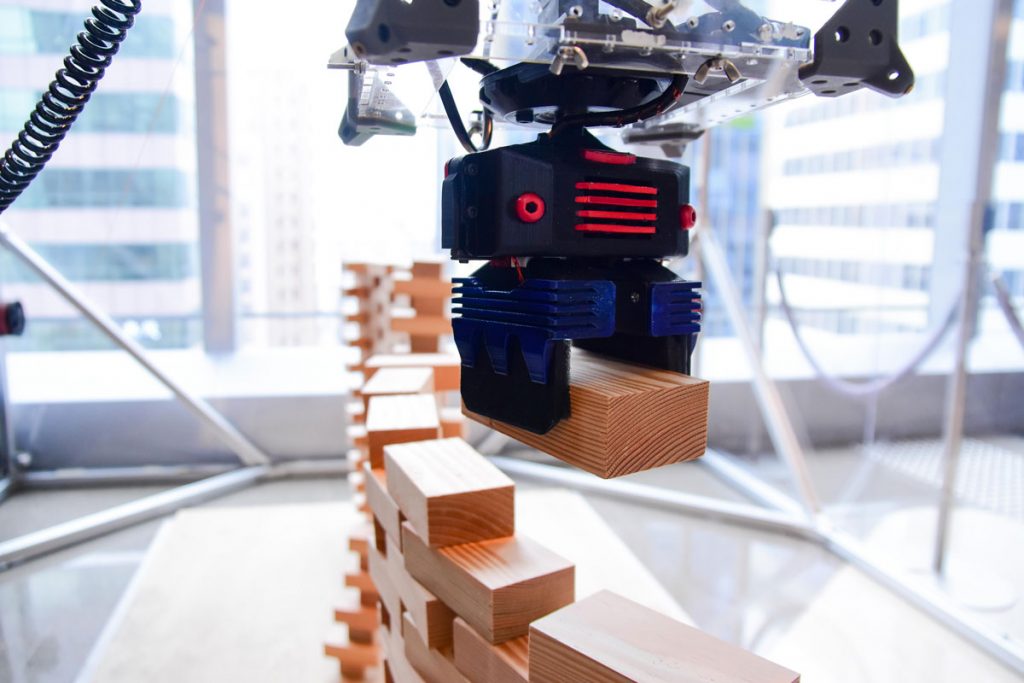
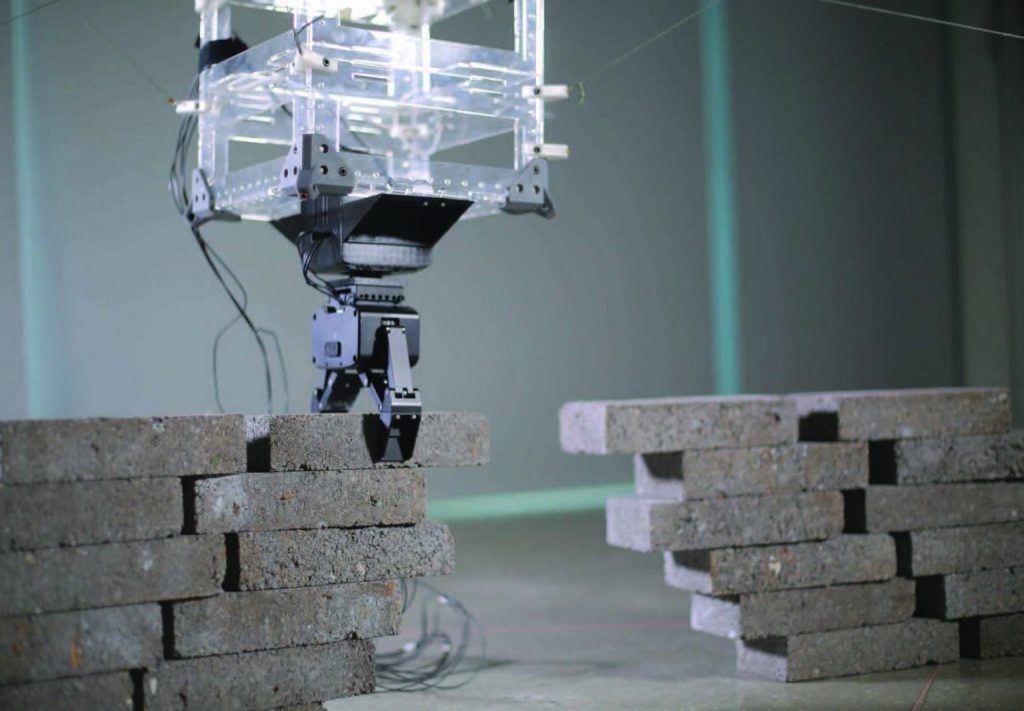
Cable robots use flexible cables as actuators. Each cable is wound around a rotor twisted by a motor, with the other end attached to the end-effector. A cable-driven robot is a mechanism that has several distinct features, including the capacity to span wide areas while carrying heavy loads and still being structurally basic in a manner that other kinds of robots cannot. These robots can execute various manipulation tasks and offer various advantages over traditional robotic manipulators. Currently, a limited number of cable-driven robotic systems are on the market.
A famous example of cable robots in construction is the “CU-Brick,” in which the robot can autonomously create geometrically complicated brick structures with hundreds of bricks or more. The device consists of a gripper end-effector and cable actuators, which may be installed on metal frame structures to support walls and roofs in various settings.
2. Mobile Robots
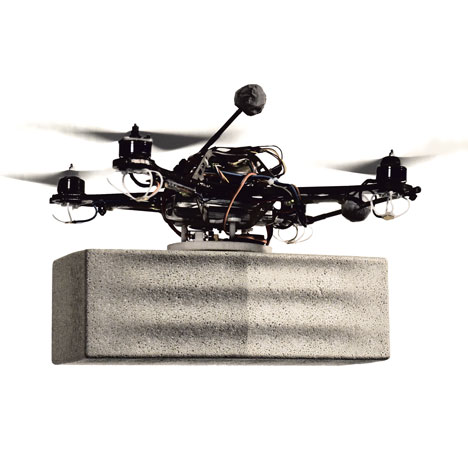
Designing fabrication processes to allow for parallelization and using mobile multi-robot construction systems are solutions for accelerating construction, but they often need considerable supporting infrastructure. The mobility aspect introduces additional challenges such as state estimation, localization, environment perception, motion planning, and control. These challenges can be particularly hard for mobile robots on construction sites, as these environments are notoriously unstructured and quickly changing. Mobile robots may find it particularly difficult to overcome these obstacles in the famously chaotic and ever-changing settings of construction sites.
On the other hand, while stationary robots, e.g., gantries, robotic arms, or cable robots, are relatively easy to automate, they can only build structures that fit in their workspace. Mobile robots, contrarily, can build structures larger than their size. Even though the cost and complexity of manufacturing these robots are significant, their benefits on uneven terrain make them vital for most applications. These robots can be classified as wheeled mobile robots, walking mobile robots, flying mobile robots, and swimming mobile robots.
2. A. Wheeled Mobile Robots
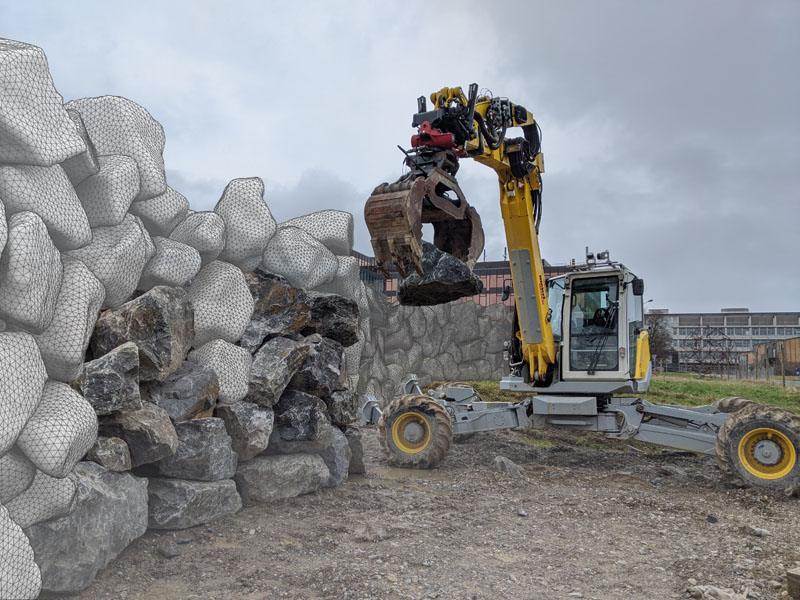
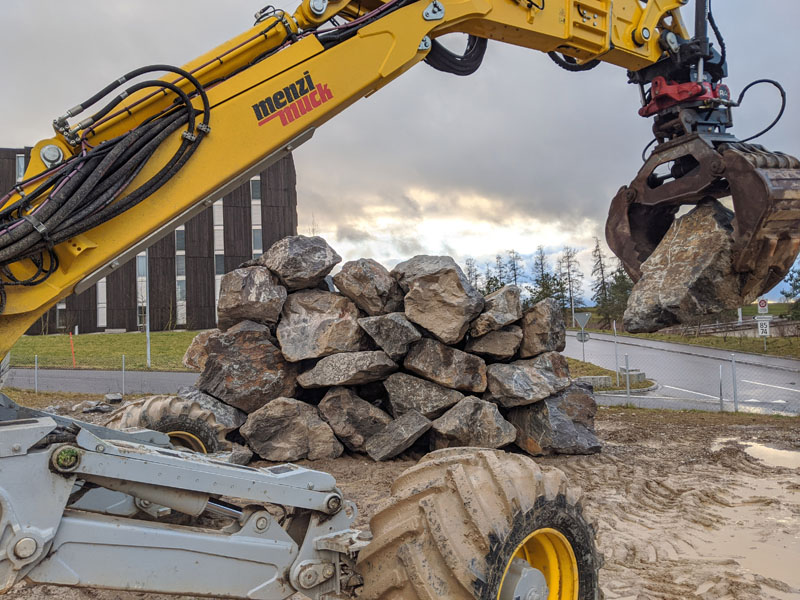
One of the most important systems for robot movement is wheels. When the robot is moving over flat, non-rugged terrain, the utilization of wheels is simpler to design, manufacture, and program. Compared to other solutions, wheel control is less complicated, and it causes less wear and tears on the surface where it moves. Another benefit is that they do not provide a significant challenge in balancing concerns since the robot is generally in touch with a surface.
The autonomous walking excavator, the Heap, is the most prominent example of such a robot. The Heap is a hydraulic excavator that is used in various missions. The Heap was first used to autonomously and precisely excavate embankments with free-form shapes in June 2020. It is also used to build dry stone walls from stones with irregular shapes. The machine maps the stones, which picks them up and moves them in front of the roof-mounted LiDARs. Additionally, this robot can harvest trees in autonomous forestry work.
Heap is compatible with semi-autonomous teleoperation as well. Equipped with multiple cameras, it was used to dig a trench in soil containing live World War II ammunition, where a standard approach with an operator in the cabin would be too dangerous.
2. B. Walking Mobile Robots
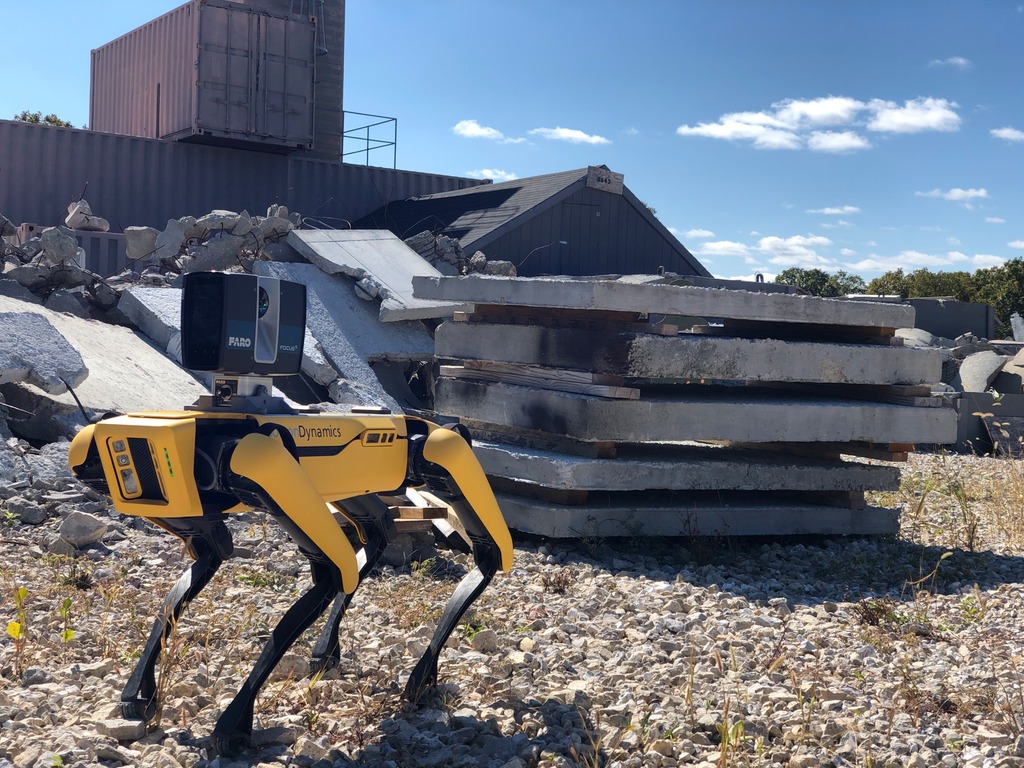
Although walking robots are much more expensive than wheeled robots, having legs offers various benefits over wheels. The largest benefits of these robots are their versatility and efficiency, as well as the fact that they can operate on soft and uneven terrain, providing superior mobility, energy economy, stability, and a lower effect on the ground. Walking robots also have the benefit of being able to deal quickly with obstructions or gaps in the environment. In short, adaptability and maneuverability on tough terrain are their main merits. There are several varieties of walking robots based on the number of legs. The most significant are bipeds (humanoids), four-legged (quadrupeds), six-legged, and so on.
Spot 1.1 from Boston Dynamics is a brilliant example of four-legged walking robots. That can handle terrain with incredible mobility, enabling you to automate regular inspection tasks and data collecting safely, accurately, and frequently. Spot works based on remote sensing. It travels across a site and records the map that it creates as it goes. It will remember its path through an environment and can repeat that journey autonomously without needing a human to control it through the environment again.
2. C. Flying Mobile Robots
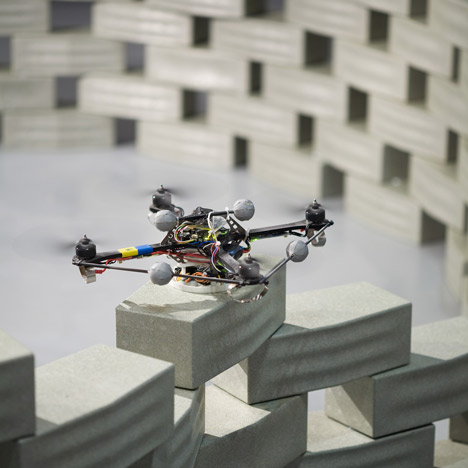
The area of digital fabrication is expanding. Recent advances in computing, sensing, and control make it possible to build self-sufficient flying machines capable of carrying out challenging construction tasks in unstructured environments. The investigation of aerial approaches to robotic construction has become the most current research subject for on-site construction. This concept included the use of flying vehicles to modify construction components in the air. This would eliminate the constraints inherent in ground-based movement and the necessity for scaffolding. Flying robots in construction float and navigate in the air, utilizing plane-like or bird/insect-like wings, propellers, or balloons.
The flying robots by Gramazio and Kohler are exemplary models of flying robots in construction. These robots are used to install a six-meter-high tower at the FRAC Centre in Orléans, France. The mobile robots lift, carry and assemble 1500 polystyrene foam blocks to assemble the structure.
2. D. Swimming Mobile Robots
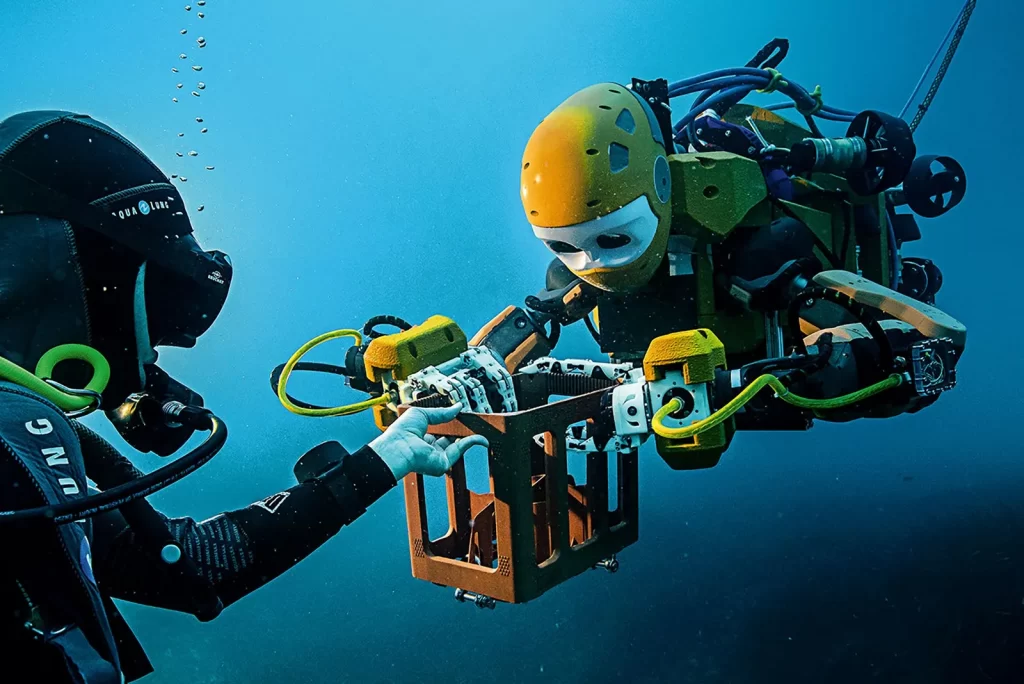
Although not prevalent in architecture, the underwater vehicle-manipulator system is one of the hottest research issues as an essential branch of mobile robotics. OceanOne is a concept of a submarine robot. It is a humanoid robot that explores the seafloor. It uses the best remotely controlled vehicles and the benefits of humanoid robots, such as having a robotic hand with which to retrieve items as if it were a human person.
3. Swarm Robots
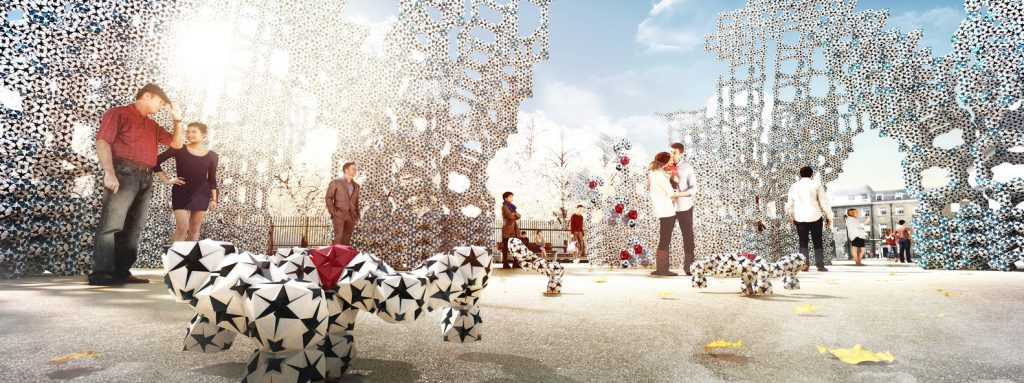
Swarm robotic platforms, which enable several robots to cooperate and execute tasks concurrently, are among the current innovations. Swarm robots in construction are robotic systems made up of many tiny robots. These robots in construction do not function as a single entity but rather operate as their robot modules work cooperatively. The robots follow their pre-planned, collision-free trajectories as nearly as possible. The robots avoid collisions. Due to these requirements, the system can change the number of robots used throughout fabrication and add, remove, or reuse them. The system may be fully parallelized to transversely expand the structure’s footprint without prolonging the fabrication process.
NoMad serves as an exemplary model of swarm robotics. Developed by Architectural Association students, the concept is based on a tiny unit of motors coupled to several magnetic panels to readjust into various forms. These motorized components expand, move, and rotate to assemble themselves into primitive constructions. Indeed, this concept is so amazing that none of these tasks are controlled by anyone on the site. The concept is viewed as a futuristic idea for a non-finite, mobile, and infinitely adaptable architecture.

Likewise, Fiberbot, developed by the MIT-based Mediated Matter Group, is a group of similar robots that work together to manufacture various elements of the same structure that are tens of times bigger than themselves. Each robot constructs an autonomous composite tube that can ascend and expand by wrapping fiber and resin around itself. The trajectories of the robots are regulated to build interweaving tubes that culminate in a computationally created woven design. This whole system is scalable, enabling more robots to be added without significantly increasing design complexity or manufacturing time, offering a scalable advancement in autonomous, site-specific fabrication technologies.
Outlook
Effective robots in construction have a bright future in structured settings. Robots vary from typical architectural equipment because they can learn, adapt, and act on their senses and perceptions. However, robotics in architecture and construction is still in its early phases, and it will certainly play a larger part in the future than it does now.
This article addressed the main categories of robots in construction. The type of robot will be selected based on each project’s requirements and potential. The objective of all types is to assist humans in various ways.



